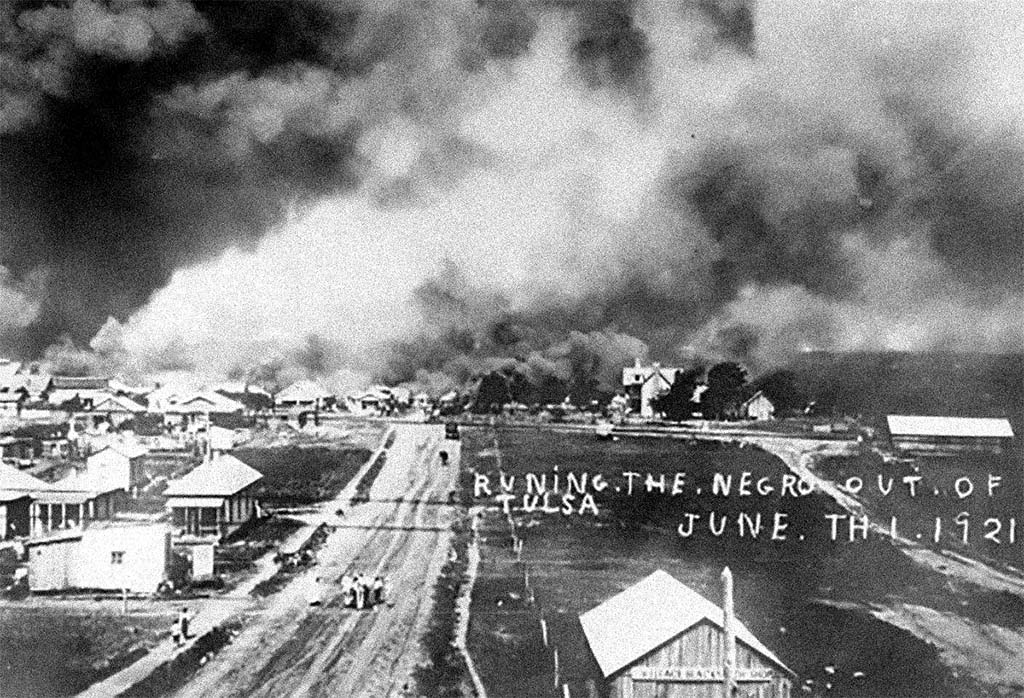The Tulsa, Oklahoma Race Massacre was one of the worst urban racial conflicts in United States history. Two days of violence by whites against Blacks left an estimated 50 people dead, hundreds injured, and more than 1,000 Black-owned homes and businesses destroyed.
The riot, which began on May 31, 1921, was initiated by an incident that happened the day before. On the morning of May 30, a Black man named Dick Rowland stepped into Tulsa’s Drexel Building to use the restroom. The elevator operator was a young white woman named Sarah Page. A scream was heard from inside the elevator, and Rowland ran out. While there was no conclusive evidence, but whites in Tulsa believed that Rowland attempted to assault Page.
Rowland was arrested, and subsequent headlines in local newspapers stirred up the white and Black populations of Tulsa. Talk of lynching arose among whites, and a crowd of whites and Blacks gathered outside the courthouse where Rowland was being held on the night of May 31. A gun discharged while a white man was trying to disarm a Black man, causing the incident to erupt into a much larger racial conflict.
By the early morning of June 1, the wholesale burning and pillaging of Black Tulsa had begun. Blacks were greatly outnumbered, and the police were not effective in controlling the riot. The National Guard declared martial law throughout the city at 11:29 am, bringing an end to most violence. The Guard then began rounding up Blacks for internment. Most white rioters returned to their homes the night of June 1, while much of Tulsa’s Black population was imprisoned.
The total number of people killed during the riot is debatable – estimates range from 27 to over 250. It is generally believed that the number of deaths has been under-estimated.
It took nearly a decade for Tulsa to recover from the physical destruction it endured from the riot. Despite its significance, both black and white Tulsans claim the incident has been “hushed up” and not adequately recognized. It was scarcely mentioned in history books, especially Oklahoman history books.
In 1996, Oklahoma formed a commission to investigate the riot and prepare a historical account. The Tulsa Race Massacre Commission issued its report in February 2001. It recommended restitution for African American survivors and their descendants; a scholarship fund for descendants; economic development in the Greenwood district; and a memorial for the victims.

